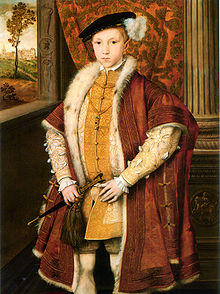Clothing terminology
edited copy of: https://en.wikipedia.org/wiki/Clothing_terminology
Clothing terminology comprises the names of individual garments and classes of garments, as well as the specialized vocabularies of the trades that have designed, manufactured, marketed and sold clothing over hundreds of years.
Clothing terminology ranges from the arcane (watchet, a pale blue color name from the 16th century) (t-shirt), and changes over time in response to fashion which in turn reflects social, artistic, and political trends. For PTR purposes understanding clothing terminology is important to realize and actualize the value of the clothing: namespace. Certain attributes are to be tagged without a namespace while in some instances you have to include it with the article of clothing to optimally convey the meaning e.g. clothing:frilled apron.
Categories
At its broadest, clothing terminology may be said to include names for:
- Classes of basic garments: shirt, coat, skirt, dress, suit, underwear, swimsuit
- Length, for skirts and dresses: micro-mini, mini, tea length, ballerina length, full length, midi, maxi
- Contemporary and historical styles of garments: corset, frock coat, t-shirt, doublet
- Parts of garments: sleeve, collar, lapel
- Styles of these: juliette sleeve, Peter Pan collar
- Clothing details: pocket, french cuff, zipper
- Functional uses: base layer, insulation layer, outer shell
- Traditional garments: cheongsam, kilt, dirndl, fustanella
- Fashions and "anti-fashions": preppy, New Look, hip-hop, rational dress
- Fabrics: denim, wool, chiffon, velvet, satin, silk, cotton
- Fabric treatments: fabric painting, transfers, ikat, tie-dye, batik
- Fabric manipulation: pleat, tuck, gather, smocking
- Colors and dyes: madder red, indigo, isabella
- Sewing terms: cut, hem, armscye, lining
- Patternmaking terms: sloper, toile
- Methods of manufacture: haute couture, bespoke tailoring, ready-to-wear
- Retailers' terms:
- Size ranges: Small, Medium, Large, XL (Extra Large), XXL (Double Extra Large), Junior, Misses, Plus Size, Big-and-Tall
- Retail seasons: back-to-school, holiday, resort, seasonal
- Departments: special occasion, sportswear, bridge fashion
- Degrees of formality: formal wear, bridal, business casual
- Market: high end, high street, ethical consumer, cut price
Persistence

Despite the constant introduction of new terms by fashion designers, clothing manufacturers, and marketers, the names for several basic garment classes in English are very stable over time. Gown, shirt/skirt, frock, and coat are all attested back to the early medieval period.
Gown (from Medieval Latin gunna) was a basic clothing term for hundreds of years, referring to a garment that hangs from the shoulders. In Medieval and Renaissance England gown referred to a loose outer garment worn by both men and women, sometimes short, more often ankle length, with sleeves. By the 18th century gown had become a standard category term for a women's dress, a meaning it retained until the mid-20th century. Only in the last few decades has gown lost this general meaning in favor of dress. Today the term gown is rare except in specialized cases: academic dress or cap and gown, evening gown, nightgown, hospital gown, and so on (see Gown).
Shirt and skirt are originally the same word, the former being the southern and the latter the northern pronunciation in early Middle English.
Coat remains a term for an overgarment, its essential meaning for the last thousand years (see Coat).
To bring this back to the purposes of the PTR, janitors have a certain agreed upon persistent style for types of clothing that may not always be consistent with the contemporary use. For example naming series as closely to their original titles in their country of origin is preferred. clothing:kosode & clothing:geta are relevant only in their cultural context despite for all intents and purposes being a loose jacket and a platform sandal.
